Introduction
Silicone rubber compression molding stands as a leading technique in the realm of modern manufacturing. This intricate process involves shaping silicone rubber compounds through the application of heat and pressure, resulting in the creation of intricate and high-quality products across a myriad of industries. While the art of molding is at the core of this process, the foundation for success lies in the intrinsic properties of the material itself.
The properties of the silicone material wield a significant influence on the outcome of compression molding. The ability of the material to withstand pressure, maintain shape, and endure various conditions is a critical determinant of the final product’s quality and effectiveness. As a result, understanding and optimizing these material properties are essential for achieving successful compression molding outcomes.
However, the story doesn’t end with the material’s inherent properties alone. Ensuring that these properties align seamlessly with the molding process demands a meticulous approach. This is where material testing takes center stage. Material testing serves as the linchpin in this intricate dance between material and injection molding process. It is the process through which manufacturers meticulously analyze and evaluate the material’s behavior, characteristics, and responses under diverse conditions.
As we embark on this exploration of silicone rubber compression molding, we will unveil the symbiotic relationship between material properties and the molding process. We will also uncover the crucial role that material testing plays lsr molding process in not only ensuring the integrity and consistency of the end products but also in pushing the boundaries of what can be achieved through this remarkable manufacturing technique.

II. Understanding Material Testing
Material testing, a cornerstone of modern manufacturing, is a comprehensive process that entails subjecting materials to various analyses and assessments to ascertain their properties, behaviors, and performance characteristics. Its purpose is to unveil a material’s intrinsic nature, enabling manufacturers to make informed decisions throughout the production cycle. In the realm of silicone rubber compression molding, material testing assumes a pivotal role in ensuring the quality and consistency of the final products.
The significance of material testing becomes particularly pronounced when it comes to evaluating the physical, mechanical, thermal, and chemical properties of silicone rubber compounds. Through a series of controlled experiments and analyses, material testing sheds light on critical attributes such as tensile strength, elasticity, hardness, thermal conductivity, chemical resistance, and more. By thoroughly understanding these properties, manufacturers can decipher how the material will behave under the conditions imposed during compression molding.
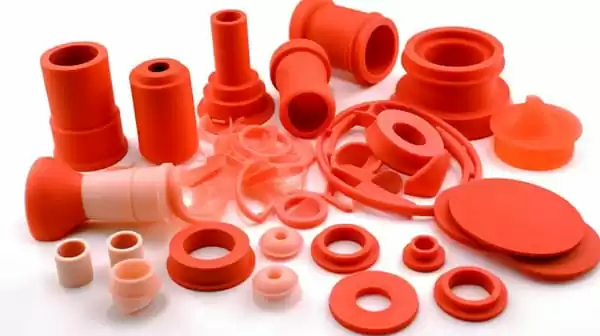
Material testing guides manufacturers in making crucial determinations about the suitability of a specific material for the compression molding process. The insights garnered from material testing inform decisions about material formulation, process parameters, and even mold design. For instance, by examining a material’s mechanical properties, manufacturers can discern whether it will withstand the pressures and forces experienced during molding without compromising structural integrity. Similarly, insights into a material’s thermal characteristics aid in optimizing the curing process to ensure complete and uniform solidification.
In essence, material testing acts as a guiding compass, helping manufacturers navigate the intricate landscape of material selection and process optimization. Through a comprehensive understanding of a material’s behavior and properties, manufacturers can fine-tune their approaches, leading to the production of high-quality products that meet stringent industry standards. As we journey further, we will unravel how material testing’s insights intertwine with the nuances of the compression molding process, ultimately sculpting the shape of excellence in manufacturing.
III. The Material: Silicone Rubber in Various Forms
Silicone rubber, an instrumental player in the realm of compression molding, holds unparalleled relevance due to its unique properties and versatility. Its remarkable characteristics make it a prime candidate for a multitude of applications across industries. As we delve deeper into the intricacies of silicone rubber compression molding, it’s crucial to understand the distinct forms in which silicone rubber presents itself: liquid silicone rubber (LSR) and solid silicone rubber.
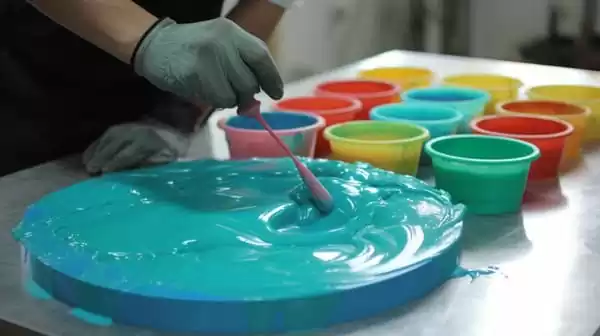
A. Relevance of Silicone Rubber in Compression Molding
Silicone rubber’s distinctive attributes make it an ideal material for compression molding. Its inherent flexibility, heat resistance, and remarkable durability form a trifecta that aligns silicone polymer perfectly with the demands of the compression molding process. This material’s ability to maintain its original shape, even under the application of pressure and heat, ensures that the final product retains precision and consistency.
B. Differentiating Between LSR and Solid Silicone Rubber
Liquid Silicone Rubber (LSR): LSR, characterized by its liquid form, presents an array of advantages in compression molding. Its low viscosity facilitates intricate design intricacies and detailed molds, ensuring precise replication of even the most complex shapes. This form is particularly well-suited for applications requiring fine details and intricate patterns.
Solid Silicone Rubber: Solid silicone rubber, as the name suggests, offers robustness and durability. It’s the go-to choice when applications demand resilience against rigorous conditions, including high temperatures and mechanical stresses. Its ability to withstand pressure and retain its form after compression molding contributes to the longevity and reliability of the injection molded end product.
C. Utilization of LSR and Solid Silicone Rubber in the Molding Process
In the realm of silicone rubber compression molding, the choice between LSR and solid silicone rubbers hinges upon the specific requirements of the product being manufactured. LSR’s fluidity and ease of flow make it ideal for intricate designs and delicate components, often found in medical devices and electronic equipment. Conversely, solid silicone rubber shines in applications where durability and resistance to environmental factors are paramount, such raw materials such as gaskets, seals, and automotive components.
Ultimately, the choice between LSR and solid silicone rubber underscores the adaptability of silicone materials to diverse applications. As we journey through the nuances of silicone rubber compression molding, we’ll witness how the specific form of silicone rubber material used harmonizes with the molding process, resulting in products that encapsulate precision, durability, and excellence.
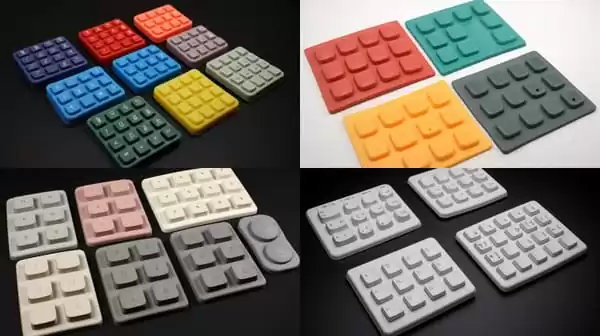
IV. Key Process Parameters and Their Effects
The symphony of silicone rubber compression molding relies on a delicate interplay of key process parameters. Each parameter – temperature, pressure, curing time, and mold design – acts as a conductor, shaping the material and sculpting the final product. In this section, we’ll unravel the importance of these parameters and their profound impact on both the material and the end result.
A. Temperature: A Crucial Factor in Material Transformation
Temperature serves as a critical determinant in the material’s behavior during compression molding. The balance between heat and material is a delicate dance that impacts viscosity, elasticity, and curing. An optimal temperature ensures the material flows smoothly, fills the mold cavity, and attains the desired shape. However, excessive temperatures can lead to material degradation, altering the final product’s properties.

B. Pressure: Shaping Material, Defining Quality
Pressure plays an instrumental role in forming the material into the desired shape. Appropriate pressure ensures complete material distribution, minimizing voids or defects. It compacts the material, enhancing its density and strength. On the flip side, insufficient pressure can lead to incomplete filling of the mold, resulting in subpar product quality and integrity.
C. Curing Time: The Journey to Solidification
Curing time dictates the duration for which the material is exposed to heat and pressure. This period is essential for the chemical reactions that transform the material from a malleable state to a solid structure. Proper curing time ensures the material attains the required hardness, durability, and resilience. Inadequate curing time can lead to undercured products, prone to deformation and reduced mechanical properties.
D. Mold Design: The Blueprint for Precision
Mold design is the silent architect behind the final product’s precision and intricacy. The layout of the mold cavity dictates how the material flows, solidifies, and adopts the desired form. An aptly designed mold ensures uniform material distribution, minimal defects, and optimal cooling. Conversely, a poorly designed mold can lead to uneven material distribution, warping, and compromised product quality.
E. Impact on Material and Final Product
The manipulation of these parameters orchestrates a transformation in the material, shaping its physical and mechanical properties. The right combination ensures the material retains its original thickness, dimension, and tensile strength. Simultaneously, they dictate the quality, durability, and overall performance of the finished product. The intricate synergy of these parameters encapsulates the art of silicone rubber compression molding, where precision, expertise, and optimization meld to craft excellence.
As we proceed, we’ll continue to explore the intricate relationship between material properties, process parameters, and the meticulous art of material testing. Through this exploration, we uncover the secrets to producing silicone rubber products that excel in their applications and define the pinnacle of manufacturing achievement.
V. Material Testing: The Guardian of Quality Control
Material testing emerges as the sentinel of quality control within the realm of silicone rubber compression molding. Its purpose transcends mere analysis; it serves as a vigilant guardian, ensuring that the material’s properties align seamlessly with the desired outcomes. In this section, we delve into the crucial role of material testing as a beacon of quality assurance in silicone molding.
A. Material Testing as Quality Assurance
Material testing operates as the bedrock upon which the integrity and reliability of the final product stand. It encompasses a suite of analyses and evaluations that scrutinize the material’s physical, mechanical, thermal, and chemical attributes. Through meticulous testing, manufacturers gain a comprehensive understanding of the material’s behavior under varying conditions. This knowledge empowers them to make informed decisions at every stage of the manufacturing process, safeguarding product quality and performance.
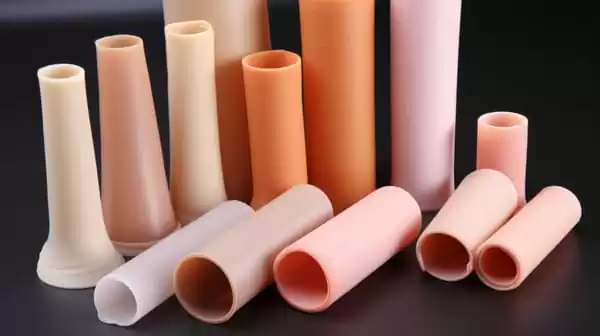
B. Evaluation of Mechanical Properties
Material testing zeroes in on a spectrum of mechanical properties that define a material’s strength, resilience, and ability to withstand external forces. Key among these properties are:
Tensile Strength: This parameter quantifies a material’s resistance to elongation under tensile load. It is a vital indicator of a material’s structural integrity and its ability to withstand stretching forces without breaking.
Tear Resistance: Tear resistance measures a material’s capacity to withstand the propagation of a tear or cut. It gauges the material’s durability and ability to endure mechanical stress.
C. Significance of Chemical and Abrasion Resistance
Silicone’s distinctive attributes extend beyond mechanical traits. Material testing delves into the chemical and abrasion resistance of silicone rubber compounds. Silicone rubber materials also boast remarkable chemical resistance, with the ability to withstand exposure to various chemicals without degradation. This property is of paramount importance in applications ranging from medical devices to industrial equipment.
Additionally, the abrasion resistance of silicone materials ensures their longevity even in abrasive environments. This resilience against wear and tear is a testament to silicone’s exceptional durability and reliability.
In essence, material testing stands as the gatekeeper of quality, ensuring that silicone rubber compounds possess the mechanical robustness, chemical resilience, and abrasion resistance required for diverse applications. As we continue our journey through the world of silicone rubber compression molding, we’ll explore how these insights influence the intricate dance of temperature, pressure, and curing time, ultimately shaping products that stand as paragons of excellence.
VI.Material Testing: The Guardian of Quality Control
Material testing emerges as the sentinel of quality control within the realm of silicone rubber compression molding. Its purpose transcends mere analysis; it serves as a vigilant guardian, ensuring that the material’s properties align seamlessly with the desired outcomes. In this section, we delve into the crucial role of material testing as a beacon of quality assurance.
A. Material Testing as Quality Assurance
Material testing operates as the bedrock upon which the integrity and reliability of the final product stand. It encompasses a suite of analyses and evaluations that scrutinize the material’s physical, mechanical, thermal, and chemical attributes. Through meticulous testing, manufacturers gain a comprehensive understanding of the material’s behavior under varying conditions. This knowledge empowers them to make informed decisions at every stage of the manufacturing process, safeguarding product quality and performance.
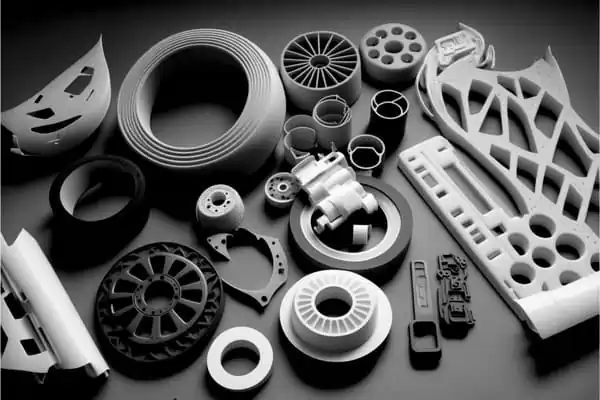
B. Evaluation of Mechanical Properties
Material testing zeroes in on a spectrum of mechanical properties that define a material’s strength, resilience, and ability to withstand external forces. Key among these properties are:
Tensile Strength: This parameter quantifies a material’s resistance to elongation under tensile load. It is a vital indicator of a material’s structural integrity and its ability to withstand stretching forces without breaking.
Tear Resistance: Tear resistance measures a material’s capacity to withstand the propagation of a tear or cut. It gauges the material’s durability and ability to endure mechanical stress.
C. Significance of Chemical and Abrasion Resistance
Silicone’s distinctive attributes extend beyond mechanical traits. Material testing delves into the chemical and abrasion resistance of silicone rubber compounds. Silicone materials boast remarkable chemical resistance, with the ability to withstand exposure to various chemicals without degradation. This property is of paramount importance in applications ranging from medical devices to industrial equipment.
Additionally, the abrasion resistance of silicone materials ensures their longevity even in abrasive environments. This resilience against wear and tear is a testament to silicone’s exceptional durability and reliability.
In essence, material testing stands as the gatekeeper of quality, ensuring that silicone rubber compounds possess the mechanical robustness, chemical resilience, and abrasion resistance required for diverse applications. As we continue our journey through the world of silicone rubber compression molding, we’ll explore how these insights influence the intricate dance of temperature, pressure, and curing time, ultimately shaping products that stand as paragons of excellence.
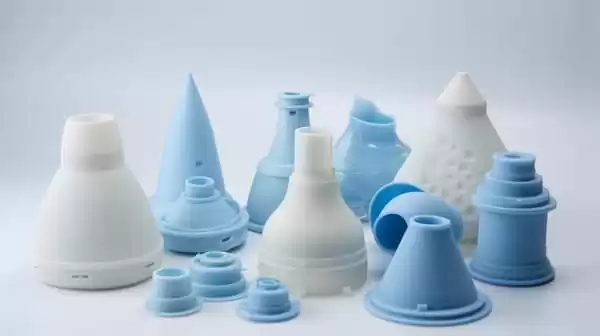
VII. Applications and Innovations
The canvas of silicone rubber compression molding is vast and diverse, adorned with a myriad of applications that span industries and sectors. Among these, the medical industry stands as a prime beneficiary, harnessing the capabilities of this process to forge revolutionary advancements in healthcare. In this section, we explore the intricate tapestry of applications and innovations that silicone rubber compression molding weaves, with a spotlight on the medical realm.
A. Transforming Healthcare: Medical Industry
Silicone rubber compression molding has woven its way into the fabric of the medical industry, reshaping how we approach healthcare. Its versatility, precision, and durability have propelled it to the forefront of medical device manufacturing. From intricate surgical tools to patient-centric innovations, the medical sector relies on compression molding to bring its visions to life.
B. Crafting Medical Devices with Precision
Silicone rubber compression molding finds its greatest expression in the creation of medical devices that demand meticulous precision. Delicate tools and instruments used in surgeries and procedures often require intricate shapes and fine details. The process ensures that these tools are not only robust and durable but also ergonomically designed to meet the specific needs of medical professionals.
C. Comfort and Care: Cushioning Pads and Functional Components
Compression molding doesn’t merely stop at intricate devices. It extends its reach to embrace elements that enhance patient comfort and care. Cushioning pads, designed to alleviate pressure and enhance patient well-being, benefit from the precision and reliability offered by silicone rubber compression molding. These pads play a pivotal role in reducing discomfort and potential complications for bedridden patients.
Beyond cushioning pads, other functional components used in medical equipment find their genesis in compression molding. Gaskets, seals, and connectors are meticulously crafted to ensure that medical devices function seamlessly, adhering to the stringent standards of the industry.
D. Pioneering the Future: Innovations in Medical Devices
The art of silicone rubber compression molding constantly pioneers new horizons in the medical industry. Advancements such as drug delivery devices, wearables, and diagnostic tools are sculpted with precision and ingenuity through this process. The adaptability of silicone materials allows for the creation of devices that interact seamlessly with the human body, propelling the medical field into a new era of innovation and patient care.
As we traverse the landscape of silicone rubber compression molding, the medical industry emerges as a testament to the process’s transformative power. The meticulous design, precision crafting, and functional reliability of silicone products touch lives, redefine healthcare, and stand as shining examples of the boundless potential of manufacturing innovation.
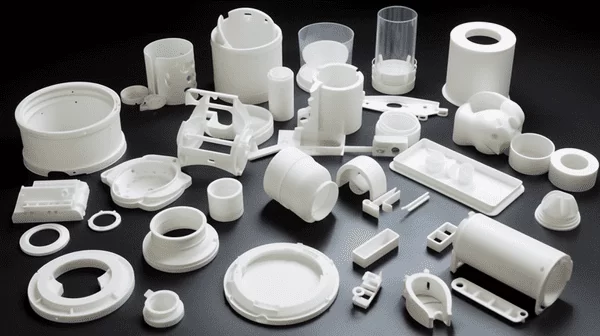
Conclusion: Shaping Industries Through Synergy
In the intricate tapestry of modern manufacturing, the process of silicone rubber compression molding emerges as a masterpiece that seamlessly blends art and science. As we conclude our journey through the nuances of this remarkable process, let’s take a moment to reflect on the key insights that have illuminated our path.
Throughout this exploration, we’ve witnessed how silicone rubber compression molding harnesses the synergy between material properties and meticulous process parameters. We’ve delved into the significance of temperature, pressure, curing time, and the transfer molding by design – each parameter a conductor orchestrating the transformation of material into intricate, high-quality products.
Amidst this dance of process and material, the role of material testing emerges as an unsung hero. Material testing, with its meticulous evaluation of mechanical, thermal, and chemical properties, stands as the guardian of quality control. It ensures that the material’s behavior aligns seamlessly with the demands of the molding process, culminating in products that epitomize excellence and reliability.
As we lift the curtain on the far-reaching impact of silicone rubber compression molding, we discover its enduring influence on various industries. From medical devices that redefine patient care to functional components that enhance everyday life, the products born from this process shape the way we interact with technology, healthcare, and the world around us.
In essence, the art of silicone rubber compression molding underscores the power of synergy – the seamless collaboration between material, process, and expertise. With each carefully crafted product, this process leaves an indelible mark on industries, paving the way for innovation, precision, and lasting impact.
So, as we take a step back and admire the intricate journey we’ve undertaken, let us recognize that silicone rubber compression molding is more than a process; it’s a testament to human ingenuity and the harmonious interplay between science and craftsmanship. With material testing as its compass and product excellence as its destination, this process continues to shape industries, driving us towards a future where possibilities are limitless, and the pursuit of perfection is unwavering.



